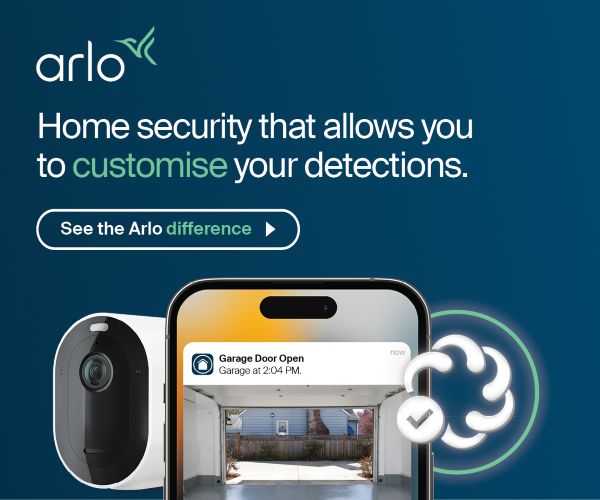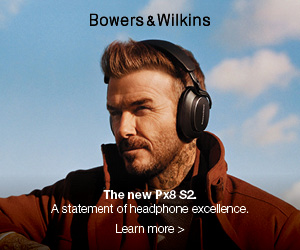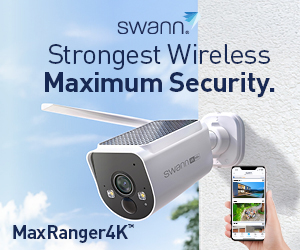The Sonos Ace is undoubtedly the peer of other premium BT, ANC, headphones from Sony, Sennheiser or Bose. But the extra things they do make them interesting – different.
Before you read this review I suggest you look at Sonos Ace (first look) – Interesting, different, excellent. Because as good as Sonos Ace is, it will have an uphill battle convincing rusted-on Sony, Sennheiser and Bose users to buy. Its interesting features are realised by linking it with a Sonos Arc Dolby Atmos soundbar (now) and soon Sonos Beam Gen 2 or even the baby Sonos Ray. Why?
When paired to a compatible Sonos soundbar (HDMI eARC) using Sonos’s wireless network (similar to Wi-Fi), you get:
- TrueCinema technology that will precisely map your space and render a complete virtual surround sound system. Upmix 7.1.4, all from a 2.0 headphone! (coming soon).
- Dolby head tracking means that no matter where you look or walk in a room, the sound moves with you—it is pretty special.
- Virtual Dolby Atmos: You can hear sound objects more in 360° space with a more expansive sound stage than any 2.0 closed-back headphones can produce.
Sonos lovers will rejoice, but there are a couple of caveats.
- At present, sound comes from the soundbar or the headphones—not both. Sonos says it is working on that, but it is a deal breaker if they cannot deliver.
- It only supports one set of headphones, and it would be nice to support two (or more) of them. Sonos says it is on the development list, but it may not be possible as it does not use Bluetooth to communicate with the soundbar. That is not a deal breaker if they can get the soundbar and headphones working simultaneously. See the Ace and Arc segment later.
Australian Review: Sonos Ace
| Website | Product page Support Page |
| Colour | Sonos Soft White or Black matte with carry case |
| Price | $699, including free delivery |
| From | Sonos Online, Harvey Norman (and sub-brands), JB Hi-Fi, Good Guys, and select sound system retailers. See store locator. |
| Warranty | 12-months ACL and 30 days free return and exchange |
| Made in | US-designed and made in China. |
| About | Sonos is an American Audio company based in Santa Barbara, California [Est 2002]. It develops and manufactures smart speakers to play music simultaneously in multiple rooms. |
| More | CyberShack Sonos news and reviews |
We use Fail (below expectations), Pass (meets expectations) and Exceed (surpasses expectations or is the class leader) against many of the items below. We occasionally give a Pass(able) rating that is not as good as it should be and a Pass ‘+’ rating to show it is good but does not quite make it to Exceed. You can click on most images for an enlargement.

First Impression – Pass+
Premium headphones all have similar designs—some with touch, some with buttons, padded headbands, memory foam, faux leather or fabric ear cups, etc. All will claim that their design is a radical departure from the norm, that they are uber comfortable, and that they immerse you in every sound (Well, Apple AirPods Max claims that).
I call this the glass slab smartphone syndrome because beneath the cosmetic finishes is where it counts—the sound quality, ANC effectiveness, and battery life. You must look past the skin-deep beauty. We don’t have a set of AirPod Max, but we do have the premium models from Sennheiser (Momentum 4), Sony (WH-1000XM5), and Bose (QuietComfort 45, but these have just been superseded).
So, as part of the review of this new ‘upstart’ headphone brand, comparisons are inevitable.
Ace and Arc. WIP or RIP?
Disappointed I am (channelling Yoda) that a) it is currently only a function of the iOS app [80% of the world uses Android] and b) I borrowed an iPhone 12, and I could not get it to work. I tried removing the app, reinstalling, and resetting everything, but it would not connect and instead pointed me to a useless Help Page.
Then it occurred to me that I have the Arc, Sub, and 2 x Era 300 rears connected via Ethernet (not Wi-Fi), which provides the best Dolby Atmos fidelity and eliminates clipping I was experiencing at the time. I enabled Wi-Fi on the Arc, and voila – it works.
This also allows Home Theatre Spatial Audio (faux 3D sound) and Head Tracking (voice remains in a constant location, e.g., from the screen, no matter where you move.
Lip-sync was reasonable and I noticed that the sound was not as crisp as a BT connection, and the EQ did nothing. I must experiment with the App and see if the Arc settings influence this behaviour. It has excellent left/right directionality and superb head tracking, which I understand can be used without the Arc.
BT 5.4 – Exceed
It is the clear winner ahead of all current premium headphones as it uses a Qualcomm BT 5.4 chipset and supports SBC, AAC, LDAC, aptX, aptX HD, aptX Adaptive and aptX Lossless in up to 24-bit and 96000Hz (Android only).
iOS limitation: There is no aptX codec suite—only SBC and AAC. Sonos added iOS Lossless support in firmware update 13/5/24, although it does not mention how it does it without a Qualcomm aptX Lossless codec.
How does Sonos Ace sound?
With the caveat that different Bluetooth Codes can give different results, we tested with SBC (the table below) and aptX Adaptive. While the white noise generated native sound signature results were not significantly different, aptX Adaptive enhanced mid- and high-treble (a little flatter—good), and the sound quality improved markedly over SBC.
There was little overall difference in the native sound signature using aptX Lossless, 3.5mm, or USB cable, except that sound quality improved markedly over SBC and slightly over aptX Adaptive.
Sonos Ace sound test

| Deep Bass 20-40Hz | Nil |
| Middle Bass 40-100Hz | from 43Hz (impressive) building linearly to 100Hz flattening off. |
| High Bass 100-200Hz | Flat (good) |
| Low Mid 200-400Hz | Flat |
| Mid 400-1000Hz | Flat with a slight boost to 1kHz |
| High-Mid 1-2kHz | Flat |
| Low Treble 2-4kHz | Flat |
| Mid Treble 4-6kHz | Flat |
| High Treble 6-10kHz | Dip to 7kHz, then recover to 9kHz |
| Dog Whistle 10-20kHz | Second dip at 9-10kHz and recover followed by flat at 10kHz, a linear dip 15kHz to 20kHz |
| Volume | SBC is limited to 80dB to prevent hearing damage from prolonged high volume. 3.5mm cable and USB allow for higher volumes to 100dB. |
| Sound Signature type | It is very close to Neutral: The audiophile standard is a flat (good) response that neither adds nor subtracts from the original music. The slight boost from 500Hz to 1kHz aids a clear voice. The treble is good and has two very close dips at 7 and 9kHz to avoid harshness. |
| Left/Right separation | With SBC stereo, you have excellent left/right separation and directionality. With Dolby Atmos music, you have a far wider 360° sound stage, allowing multiple sound objects to surround you. |
| Soundstage | The SBC stereo is like all closed-back headphones inside your head. With Dolby Atmos content, the soundstage widens about 15cm past the earcups and gives a nice sense of front-centric height for movies in landscape mode. |
You can get Dolby Atmos content from
- Amazon Music Unlimited – Dolby Atmos Music, Sony 360 Reality Audio
- Apple Music – Dolby Atmos Music
- TIDAL – Dolby Atmos Music
Sound quality comparison to major brands – Pass+
- Sennheiser Momentum 4: The Sonos Ace is slightly more bassy (you can recess that in the App EQ). The Sennheiser also has two identical mid-high treble dips and sounds almost the same at the top end. Winner – draw
- Sony WH-1000XM5: Sony has more powerful bass (which I need to recess anyway) and two high treble dips at 7 and 11Hz. Winner – draw
- Bose QC-45: Similar bass and neutral signature, but Sonos is far better at the mid-high treble – that sense of being there. Bose also tends to over-process and brighten music. To be fair, Bose now has more expensive QuietComfort and Ultra models (not tested). Winner – Sonos.
ANC comparison to major brands – Pass+
We lack ANC testing equipment, so this is subjective and involves standing one metre from a clothes dryer with strong thrumming bass from 20-100Hz and a 95dB volume.
While all four effectively block the sound, the Sony and Bose have a slight edge.
But as Sennheiser rightly points out, ANC means compression/clipping, and it won’t sacrifice sound quality at the lower end. Sonos and Sennheiser Momentum 4 gave the best listening quality.
Aware, Ambient or talk-through mode – Pass+
All were equal in being able to hear their surroundings. Subjectively, Sony has a very slight edge.
But Sonos Ace had a better sidetone, and you could hear your voice quite naturally while wearing the headphones. Winner – Sonos.
Hands-free calling – Pass+
Callers commented on the excellent voice clarity and background noise reduction. These would be excellent for video conferences. To be fair, they are no better or worse than Sennheiser or Sony.
Comfort – Pass+
These are heavier and larger at 191 x 160 x 85mm x 312 g compared to Sennheiser 290g, Sony 250g, and Bose QC45 240 g.
Comfort is subjective. It combines head clamping force, heat dissipation from ear cups, headband comfort, and, to a large degree, what you are used to. For example, my wife wears the Bose and finds the Sonos Ace heavier but quite comfortable. I wear the Sennheiser and found little weight or comfort difference.
My take is that they are no better or worse for everyday use than the competition. For long-haul travel, I cannot beat the now-discontinued Sennheiser PXC550-II at 217g (still available as EPOS Adapt 660 at <$600) that folds flat and up (like Bose QC45) and takes less room in my backpack. But yes, they are very comfortable.
Sonos App 80.X – Passable
80.0 was released on 7/5/24 and has had four updates since to 80.01.08 (Android) and 80.1.30 (iOS). Therefore, much of the criticism of 80.0 is now out of date.
Let me state that I have no issues with the new app that supersedes version S2. It is more focused on content, and I understand it has depreciated some features I must not have used. You can read more about it at the Sonos Community. Given four updates in a month, I have reasonable confidence that the issues will be addressed.
My single issue is that the Sonos Ace can often take a few minutes to show up in the App and sometimes requires a smartphone reboot. The BT connection, however, was super-fast.
EQ – Pass+
- Bass
- Treble
- Balance
- Loudness
It works very well on Bluetooth and cabled content but did not appear to work on TV content via the Sonos Arc.
Other app features – Pass+
- Multipoint to two host devices (enable in-app) – Pass but requires you to use the app to select the host.
- Voice control – a function of the host device.
- Wear detection on/off
Charge and Listen – Exceed
Sonos ACE has an internal DAC (like Sennheiser) that allows you to charge and listen simultaneously over a USB-C cable or Bluetooth. This feature is not possible on Sony or Bose and is extremely useful for long-haul flights.
USB-C listening is also available with USB-C 3.1 Gen 1 smartphones.
Battery Life and Power Use – Pass+
Sonos claims 30 hours of listening or 24 hours of call time with Aware Mode/Noise Cancelling. This is likely at 50% volume, sufficient for most music genres and TV.
We found that TV sound swap from the Arc gave about 12 hours of battery life as it uses a form of Sonos Wi-Fi and has additional processing for faux 3D sound and head tracking.
It charges as low as 5V/250mA/1.25W, which means it can be charged from any charger, PC, Mac, etc.
Given the exceptionally long battery life, we have been unable to do multiple battery tests but confirm that:
- With ANC enabled, we obtained 27.67 hours at 50% playback on Bluetooth SBC codec. We expect that higher-quality codecs will reduce that accordingly.
- It will charge from any USB-C PD charger in about 3 hours.
- When battery life is <10%, a 3-minute charge gives about three hours of listening.
Travel case and accessories – Pass+
Like all premium products, it has a travel case. This is a fold-flat, hard-sided, felt/flock-lined case with a cable pouch. It is nice.
The USB-C to USB-C cable is 760mm, which is too short, given that it can charge and listen simultaneously. However, you can use any longer USB-C cable.
The 3.5mm to USB-C cable is 1200mm – about the right ‘listening length’.

Build – Pass+
The headband adjustment arms are metal (chrome on the soft white and black on the black). There is no apparent adjustment mechanism should they ever become loose. Sonos’s response was a) unlikely given the design and mechanism and b) a Sonos repair agent should be able to adjust if necessary.
One unique feature is the magnetic clip-on ear pads, which are easy to replace. While you can get spare earpads for most premium brands, they are far more challenging to fit.
We spoke to Sonos about battery replacement at the Ace launch. A Sonos repair agent can do it but cannot give the price yet. It is doubtful that batteries would need to be replaced for several years, even if charged daily.
Privacy – Pass
Sonos Ace does not require an app to work as a Bluetooth headphone, so there are no privacy issues.
If you wish to use the Sonos app to connect to a Sonos soundbar, use the app features, update firmware, or use Sonos Radio (advert-supported), you must have a Sonos account. The 5153-word Terms of Use and 9916-word Privacy Policy are appended. This excludes third-party suppliers (presumably music streaming services, voice commands, etc.)
Sonos may sell you the headphones outright, but it grants you a personal license to use the software on terms it may set from time to time. For example, and this happened, some older Sonos products were unable to work with its S2 app (they still work but not as part of the Sonos ecosystem). This is no different to Apple, Samsung, or Microsoft’s ‘depreciating’ support for older devices.
In short, Sonos collects functional data (to make the product work, and you cannot opt-out) and additional data (mainly for marketing purposes, and you can opt-out).
Sonos does not and will not sell personal information about our customers. However, it may use your data to serve advertisements, send emails on products/events/other relevant information, and share aggregated and anonymised data. Your data is stored in the country/region where you live.
Having analysed the policies and given that it is a US company operating under its privacy laws and complies with the EU GDPR, we have no issues accepting them.
CyberShack’s view – Sonos Ace is ‘Up there Cazaly’
I’m sorry if you don’t understand the Cazaly reference. It is a VFL footy thing. It means ordinary people performing prodigious feats and was the Aussie Armed troops’ battle cry in World War 2.
Despite Sonos’s music chops and Ace (then called Duke) has been rumoured since 2019, this is its first headphone. It had to rise above the other ‘players’ to score. Like Cazaly, it will be one of the great headphone stories.
Now, back to reality
It is paddling in the pool with premium, known-performance BT/ANC headsets:
- Sennheiser Momentum 4 BT, ANC over-the-ear headphones – how do you improve on perfection
- Sony WH-1000XM5 BT, ANC, headphones – great gets even better
- Bose QuietComfort 45 headphones (QC45) – BT, ANC, small and sweet

In my analysis, I look first for music quality, second for ANC/Aware, and third for a full range of Codecs over standard SBC, AAC and LDAC.
Sonos Ace
- Is very similar to the music standard of Sennheiser.
- Sony and Bose have slightly better ANC (although Ace’s Aware mode sidetone is better)
- Sennheiser and Sonos have the Qualcomm aptX suite, although Sonos also has aptX Lossless.
Depending on your brand preference, you should consider Sonos Ace a premium BT/ANC headphone, albeit at a higher price, with little difference from the incumbents.
The Sonos Ace’s secret sauce is its Arc soundbar integration, which means that it is a no-brainer if you own an Arc (or Beam or Ray in the future).
But I cannot recommend buying it for that purpose until Sonos enables simultaneous sound (soundbar and headphones), and there is no guarantee that it will or can happen. I also think not (yet) supporting two (or more) Ace headphones from the Arc is a potential deal breaker.
Sonos devotees have also expressed disappointment that these are not Wi-Fi/BT headphones like, for example, Sonos Roam or Move – after all, the technology exists and multi-room works very well.
I spoke to Sonos at the Ace launch, and they explained that 802.11 Wi-Fi and maintaining battery life are mutually exclusive. You can fit a much larger battery in the speakers but not headphones. Still, a proper 2.4/5Ghz Wi-Fi version does make sense, even if you need to power it over a USB-C cable when using Wi-Fi.
Ratings – 80/100
Note that 2024 ratings start at 70 /100 as a pass-mark. The competitor headphones mentioned use 80/100, so to be comparable, deduct 10 points from those ratings.
At present, we can only rate it as a premium BT/ANC headphone. Sonos Arc owners will get some extra benefits.
- Features: 85 Qualcomm BT aptX suite, onboard DAC for simultaneous charge/listening and premium standard music.
- Value: 80—The Sennheiser is a better value if you want BT/ANC/aptX headphones.
- Performance: 80 – Sony and Bose are slightly ahead on ANC, but Sonos Ace has a better sidetone
- Ease of use: 80 – BT plug and play. For anything else, you need the App.
- Design: 80 – There is nothing wrong with the design, but it’s the largest and heaviest.
CyberShack Verdict
Sonos Ace
$699












Comments